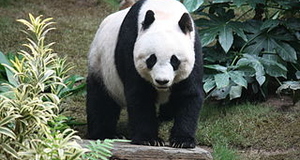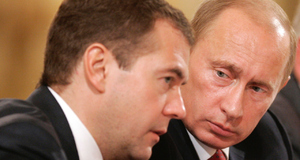From Earth Common Journal VOL. 3 NO. 1Who is King of Sarawak's Rainforest? An Insight to Sarawak's Land Corruption Led by its Chief Minister and His FamilyWho is Chief Minister Taib Mahmud?Chief Minister Pehin Sri Haji Taib Mahmud a native of Sarawak is the fourth Chief Minister of the state. He currently holds the portfolio of the state Minister of Finance and the Minister of Planning and Resource Management (The Chief Minister of Sarawak, 2013, para 1). In addition he is the President of Parti Pesaka Bumiputera Bersatu (PBB) and chairman of the state Barisan Nasional (The Chief Minister of Sarawak, 2013, para. 1). With a background in law, Taib held various ministerial positions ranging from Minister of Development and Forestry of Sarawak in 1966 and several federal portfolio positions such as Minister of Primary Industries in 1972, Minister of General Planning and Socio-Economic Research in 1974 and Minister of Primary Industries (The Chief Minister of Sarawak, 2013, para. 3-4). At the age of 45, in 1981, Taib was appointed to be the Chief Minister of Sarawak, which currently makes him Sarawak's longest-serving chief minister (The Chief Minister of Sarawak, 2013, para. 5). Taib has four children with his late wife Laila Chalecki Taib, they are Jamilah Hamidah Mahmud, Abu Bekir, Sulaiman Abdul Rahman and Hanifar Hajar (Chief of Sarawak, 2013, para. 6). Taib remarried in December 2010 to Puan Sri Raghad Kurdi Taib (Chief of Sarawak, 2013, para. 6). Taib's various ministerial positions no doubt puts him in immense political and economic power. Nevertheless, his official payroll per year as Chief Minister of Sarawak, MYR 590,000 (USD 194, 000), Taib is known for his abundance in wealth and string of assets as reported by the Bruno Manser Fund (2012, p.9). Hazis (as cited by Bruno Manser Fund, 2012, p. 9) pointed out that Taib is often seen travelling in a Rolls Royce, adorned in a designer suit, wearing a walnut-sized ruby ring and as Aeria noted (as cited by Bruno Manser Fund, 2012, p. 9) Taib resides in a well-guarded palace like mansion in Kuching, the capital city of Sarawak. Such is the lifestyle of Taib that during a 2010 election campaign, he unabashedly told rural voters in Sarawak, "I have more money than I can ever spend," reported by the Democratic Action Party Sarawak (as cited by Bruno Manser Fund, 2012, p. 9). For over thirty years, Taib Mahmud has methodically harvested a country once rich in natural resources, particularly oil, gas and timber. "While the proceeds of the oil and gas extraction are mostly benefiting Malaysia's federal government, the Sarawak state government enjoys total autonomy as to the use of the state's forest resources and state lands" (Bruno Manser Fund, 2012, p. 9). It is reported by Lim (2012, para. 5) that Taib has amassed a personal wealth of MYR 46 billion (USD 15 billion) making him Malaysia's richest man outstripping tycoon Robert Kuok who has USD 12.5 billion. The exposé by the Swiss-based NGO Bruno Manser Fund (BMF) directly pinpoints Taib playing a principal role of corruption and abuse of public funds to enrich himself, his family and his political allies through land appropriation and destructive logging of the rainforest in Borneo (2012, p. 12). One of the earliest corruption scandals to come into the limelight was in 2007. A letter by several Japanese non-governmental organizations and citizen's groups in Malaysia was sent to the then Prime Minister of Malaysia Ahmad Badawi concerning a defamation suit and threats against them by Taib and his family accused of receiving kickbacks. A report was published in the Japan Times on March 29 alleged that nine Japanese shipping companies which transported lumber from Sarawak failed to report some 1.1 billion yen (approximately MYR 32 million) in income paid as remuneration to Regent Star, a Hong Kong based agent with connections to Taib and his family, over a duration of seven years (Letter to Malaysian PM, 2007). In 2008, Tribun Pontianak (as cited by Burno Manser Fund, 2012, p. 13) an Indonesian newspaper reported that approximately 30 shipments of illegal Indonesian logs were imported into Sarawak and re-exported to other countries every month. Naturally, Taib's name was dragged into this timber scam. Lukas Straumann an advocate with the Bruno Manser Fund attested, "We know from satellite imagery that less than 10% (possibly less than 5%) of Sarawak's forests are still intact" (Butler, 2011, para 10). Yet, with Taib's multi-billion dollar industrialization project "Sarawak Corridor Renewable Energy" (SCORE), it is set to see 50 hydroelectric dams, palm oil plantations, smelter plants and mining projects displace tens of thousands indigenous people (Bruno Manser Fund, 2012, p. 13). These projects no doubt are being widely opposed as reported by The Star (as cited by Bruno Manser Fund, 2012, p. 13) by local communities who are against environmental destruction of their land and government linked corruption. Without a doubt, the people who would be reaping the fruits of this grand money making scheme are the Taib family and their close political allies. In August 2011, an independent media outlet known as Sarawak Reporter exposed Taib's USD $5 million a year contract with a British based PR company FBC media to conduct a global media campaign in his favour (Bruno Manser Fund, 2012, p. 13). Sarawak Reporter disclosed (as cited by Bruno Manser Fund, 2012, p. 14) that many reputable broadcasting agencies such as BBC, CNBC AND CNN were implicated in this scandalous campaign. According to BBC World (as cited by Bruno Manser Fund, 2012, p. 14) both CNBC and BBC have made public apologies since. As of late many broadcast channels have aired exposés of the hierarchical and systematic corruption in the state of Sarawak. Some of these channels as the Bruno Manser Fund (2012, p. 14) states include ABC, Al-Jazeera, Canadian Global News, Australia's SBS One Dateline, The Independent, Guardian, The Sunday Times, Daily Mail, The Economist, Evening Standard and Global Witness. The First Family of SarawakThe BMF report entitled 'The Taib Timber Mafia: Facts and Figures on Politically Exposed Persons from Sarawak, Malaysia' was published in 2012. According to Lim (2012, para. 6), it is the first report of its kind that describes in detail the business activities and personal wealth of 20 members of the Taib family in Malaysia, Australia, Canada, Hong Kong, United Kingdom, United States and other countries. BMF bravely disclosed the net worth of the Taib clan to be an estimated USD $21 billion, "…spread over 400 companies around the glove-all built through their near complete political and economic control of Sarawak, which has been reduced from one of the richest to one of the poorest states in Malaysia over three decades" (Lim, 2012, para. 9). Lim (2012, para. 8) remarked the BMF report was a means to build international pressure against the Sarawak's first family and provide investigating bodies, journalists, Sarawakians and interested parties with hard evidence on the Taib financial empire. In March of 2013, prior to Malaysia's 13th General Elections, Malaysians were confronted with an exposé made by Global Witness. It was a 15 minute documentary entitled 'Inside Malaysia's Shadow State: Backroom deals driving the destruction of Sarawak." Many Malaysians were outraged and taken by surprise of how the intricacies of corruption, cronyism and nepotism were happening in the state of Sarawak. Malasysian Today (2012, para. 11) explained Global Witness posed as foreign investors looking to buy land for oil palm plantations and was approached by the Regional Corridor Development Authority (RECODA), the government body charged with receiving foreign investment. However, as Global Witness reported (2012, p. 1) the investigative reporter was redirected to certain members of Taib's family looking to sell a company licensed to log and clear land for plantations in the state. Global Witness continued (2012, p. 1) a total of four land leases was offered and to their discovery, members of the Taib's family were direct shareholders in or beneficial owners of three of those land leases. "…while the fourth deal was, according to an intermediary, proposed on the understanding that Taib would receive a multimillion dollar kickback from the selling party" (Global Witness, 2012, p. 1). Global Witness (2012, p. 1) summed up their main findings in Sarawak, kickbacks, corrupt land deals, evasion of Malaysian tax and the service of economy of corruption were true and evident. The findings also reveal the elitist family of Taib "…have a deep seated contempt for Sarawak's indigenous population, whose rights to their ancestral land are enshrined in Sarawak's law and protected under the Malaysian constitution" (Malaysia Today, 2012, para. 14). As Malaysia Today noted (2012, para. 14), two of Taib's first cousins who appeared in the documentary, repeatedly referred to indigenous communities as "naughty" people who "try to make money" through "squatting" on land that has been licensed to private companies for logging and plantations. Tom Picken, Forest Team Leader at Global Witness asserted, "The Taib family and their friends have treated Sarawak's natural resources like a personal piggy bank for decades" (Malaysia Today, 2012, para 15). Picken (as cited by Malaysia Today, 2012, para. 15) further added: This investigation shows how they are willing to stash this dirty cash in jurisdictions like Singapore, which one lawyer in the film describes as "the new Switzerland." Until Singapore and other financial service centres stop allowing corrupt politicians and criminals to shield themselves and their loot from justice back home, the likes of Taib will continue to get away with stealing from their own people. However, the "piggy bank" doesn't stop there, in fact thanks to the investigative reporting of Sarawak Reporter and Global News' 16x9 the paper trail leads right to Taib's eldest child Jamilah Taib who is also a Canadian citizen and currently resides in Ottawa with her husband Sean Murray.Continued on Next Page » Suggested Reading from Inquiries Journal
Inquiries Journal provides undergraduate and graduate students around the world a platform for the wide dissemination of academic work over a range of core disciplines. Representing the work of students from hundreds of institutions around the globe, Inquiries Journal's large database of academic articles is completely free. Learn more | Blog | Submit Latest in Political Science |



















